Kabaddi, a sport rich in cultural heritage and physical prowess, requires participants to possess an array of skills, strategies, and techniques. Whether you’re an agile raider or a tenacious defender, the art of kabaddi demands a deep understanding of its nuances.
In this comprehensive guide, we will delve into the intricacies of kabaddi skills, offering valuable tips, tricks, and techniques to excel both as a raider and a defender.
Kabaddi Skills Name
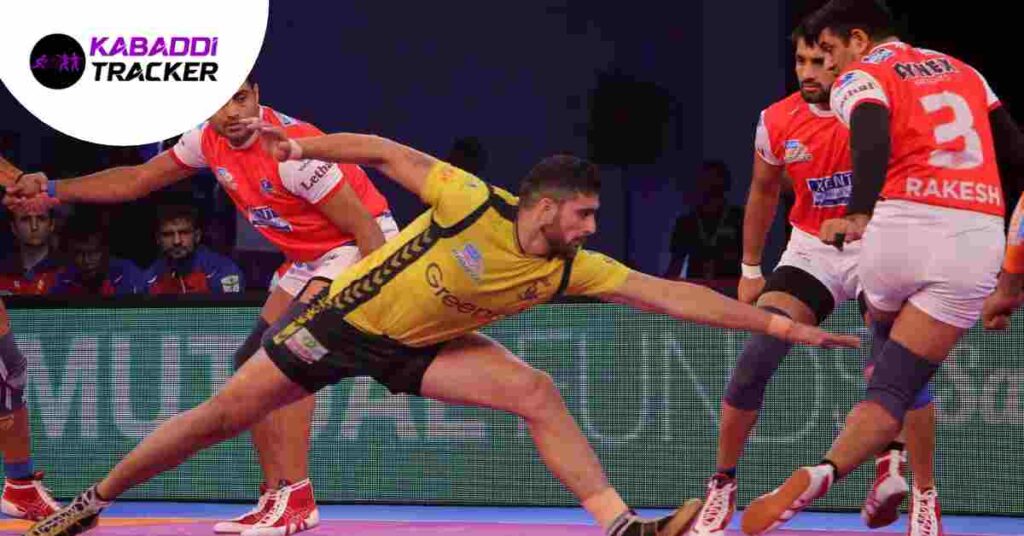
- Toe Touch: The fundamental toe touch involves a raider extending their leg to tag a defender and quickly retreating. A well-executed toe touch requires precise timing and evasive footwork.
- Running Hand Touch: This skill requires raiders to dash toward a defender, swiftly tag them with their hand, and retreat before the defender can react. Timing and speed are crucial for success.
- Back Kick: A surprise move, the back kick is executed when a raider, while facing away, kicks a pursuing defender. Flexibility, timing, and awareness of the opponent’s position are essential.
Also Read – What are the important tournaments of kabaddi - Chain Tackle: Defenders collaborate to form a chain by holding hands to trap the raider. Proper coordination and timing are essential to successfully immobilize the opponent.
Kabaddi Tricks and Tips
- Mind Games: Alter your raiding style to keep defenders guessing. Switch between different moves, making it challenging for defenders to anticipate your actions.
- Feint Moves: Employ deceptive movements to trick defenders into committing prematurely, allowing you to escape their grasp.
- Breathing Control: Kabaddi is physically demanding. Master controlled breathing techniques to maintain stamina throughout the game.
- Stay Low: Defenders should adopt a low stance to enhance stability and maneuverability, enabling quick changes in direction during tackles.
Kabaddi Techniques for Raiders

- Scorpion Kick : An advanced technique, the scorpion kick involves kicking an opponent while falling forward, extending your reach, and increasing the chances of a successful touch. Achieving this requires flexibility and impeccable timing.
- 360-Degree Raid : This high-risk move involves spinning around to tag multiple defenders during a raid. Use it strategically when defenders are spread out to catch them off guard.
Kabaddi Techniques for Defenders
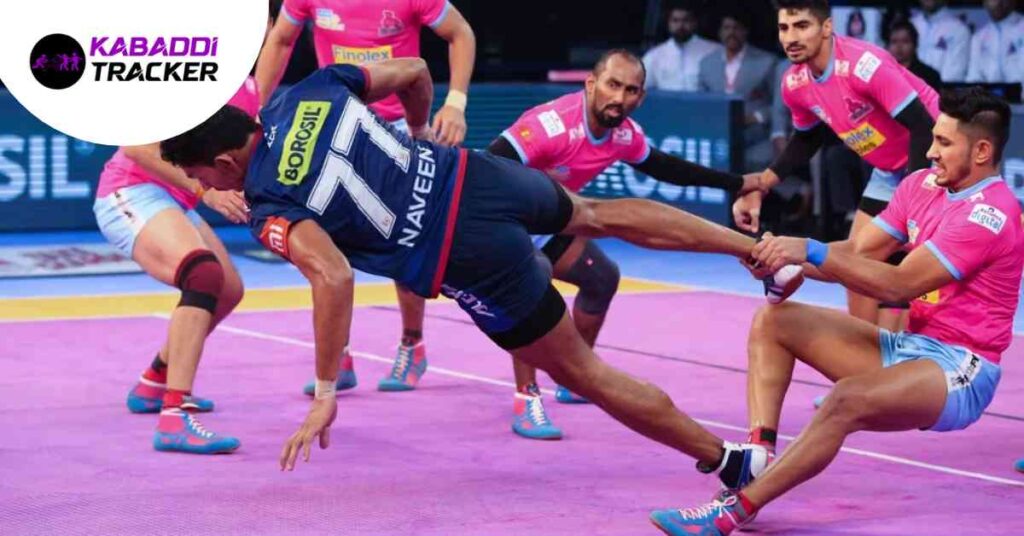
- Ankle Hold: The ankle hold is executed by gripping the raider’s ankle firmly to restrict their movement. Defenders must be cautious not to cross the center line while maintaining the hold.
- Thigh Hold: Pin the raider’s thigh to halt their progress effectively. Proper technique prevents injuries to both players and increases the chances of a successful tackle.
Kabaddi Tips and Tricks
- Fitness Regimen: A well-rounded fitness routine encompassing strength training, agility drills, and endurance exercises is pivotal for success in kabaddi.
Also Read – Who is the Team Owner of Puneri Paltan PKL Team - Video Analysis: Study match footage to analyze opponents’ raiding patterns, defensive strategies, and weak points, gaining a competitive edge.
- Mental Resilience: Kabaddi’s intensity can be overwhelming. Develop mental resilience to remain composed and focused amid the pressures of the game.
Raid Mechanisms in Kabaddi: Mastering the Art of Attacking
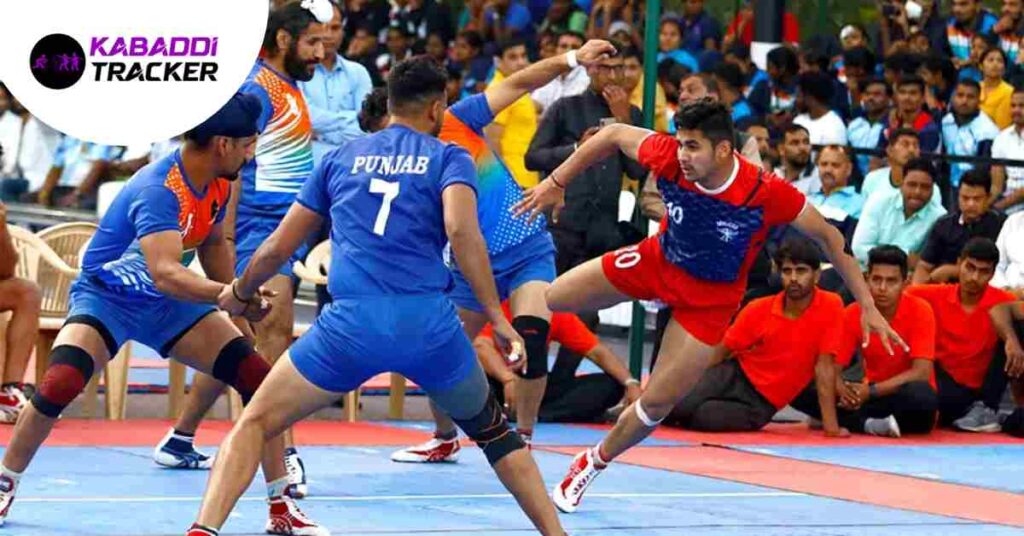
In the electrifying game of kabaddi, the attacking prowess is encapsulated within the raid mechanism. It’s an intricate dance of strategy and skill where a solitary raider faces a multitude of defenders.
To succeed, a raider must possess not only raw power but also a deep understanding of tactics to tag opponents and safely retreat to the middle line. The dynamics of the game can shift within moments, making skilled raiders the game-changers. Let’s explore the intricacies of raiding in kabaddi.
Factors Influencing Raiding
The success of a raid hinges on numerous factors that demand careful consideration:
1. Entry: The entry into the opponent’s territory is a pivotal decision. A well-timed and calculated entry can set the tone for a successful raid. The raider’s path of entry must be chosen judiciously.

2. Cant: Cant, the ritualistic chant of “kabaddi,” is crucial for a raider’s survival. The raider must initiate cant upon entering the opponent’s court and maintain it until safely returning to their side. Failure to do so results in elimination.
3. Footwork: The raider’s footwork is a symphony of agility, speed, and precision. Factors like body position, stance, and movement direction influence footwork. Quick execution is essential to evade defenders and complete the raid without losing breath.
4. Settling Path of Attack: The path the raider chooses for attack requires careful assessment. Factors like the defence setup, number of defenders, and position of strong defenders play a role in determining the optimal path.
5. Tactics: A raider must outsmart defenders. Anticipating the defenders’ strategies, adapting to their tactics, and making quick decisions during the raid are essential for success.
6. Retreat: A raid’s completion isn’t marked until the raider safely retreats. Planning the retreat route and avoiding giving the defenders room to pursue is vital.
Mastering Entry and Judgment
A raider’s entry can dictate the entire raid’s outcome. Defenders anticipate the raider’s moves, making it crucial to read their tactics and make an informed entry. Timing is of the essence; a well-timed entry can lead to a safe exit, while a mistimed one can result in getting caught.
Analysing Defenders
Judging defenders’ strengths and weaknesses is imperative. Observing defenders inside and outside the ring helps identify potential threats. Understanding opponents’ defensive moves aids in avoiding being caught.
Adapting to Defensive Strategies
Defenders frequently alter their strategies. The raider must adapt to changing defensive formations, which can vary based on the number of defenders. The raider’s ability to recognize and respond to these changes is pivotal.
Situational Awareness
Raiding is highly situational. When the team requires points, tagging a defender is vital. However, retreating to avoid capture while maintaining possession can be equally important.
The Role of Bonus Line in Kabaddi
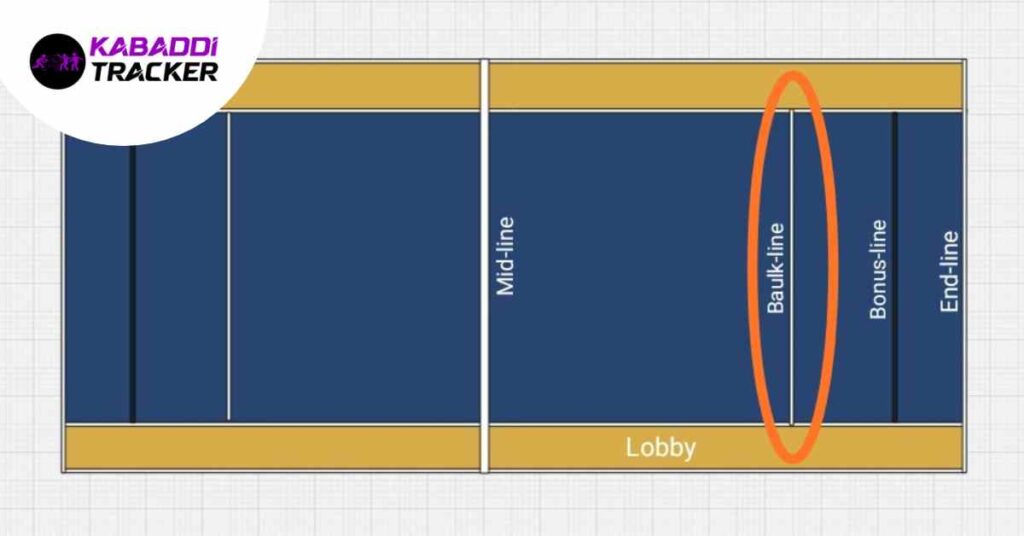
The bonus line adds a strategic layer to the game. The number of opponents on the opposite side of the raider’s zone determines whether they can earn points by merely crossing the bonus line or venturing deeper into the opponent’s territory.
Mastering Cant and Footwork
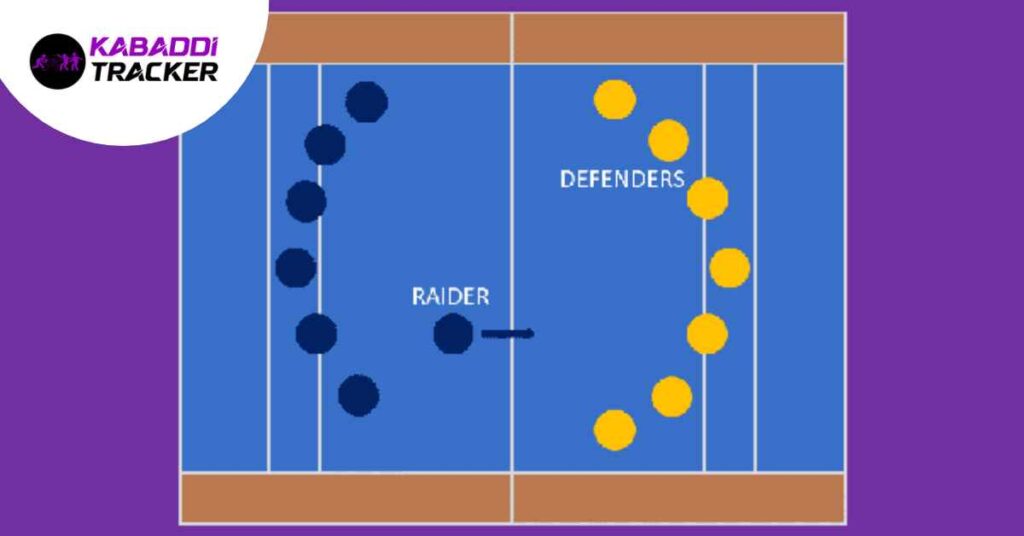
Can’t serve both ritualistic and tactical purposes. Maintaining can’t effectively allow the raider to focus on the game, while its duration can gauge their performance.
Footwork, an Art of Movement
Footwork is the raider’s art of movement. The body’s position, speed, agility, and style influence footwork. Swift movement is crucial to complete the raid before breathlessness sets in.
Necessary Offensive Skills
A skilled raider employs various touches to outwit defenders. Legal touches include foot touches, toe touches, thrusts, squat leg techniques, kicks, and hand touches through the upper limbs. Each touch demands precision and execution to maximize scoring opportunities.
Importance of Retreat
A successful raid concludes with a safe retreat. A raider’s tactical awareness is highlighted during the retreat, as they must avoid giving the defenders an advantage by positioning themselves within their team’s defensive system.
In conclusion, mastering raid mechanisms in kabaddi is an intricate blend of strategic planning, quick thinking, and exceptional physical execution. The raider’s entry, can’t, footwork and adaptability are pivotal factors that determine the outcome of each raid. A raider’s skillful execution of offensive techniques combined with a calculated retreat can significantly influence the game’s trajectory.
As kabaddi continues to captivate audiences worldwide, raiders stand at the forefront of the sport’s excitement, driving home the essential role they play in this dynamic game.
Kabaddi is a game that blends heritage, athleticism, and strategy into a captivating spectacle. Whether you’re a raider aiming to conquer territory or a defender steadfastly guarding it, mastering the intricacies of kabaddi is essential.
The journey from executing a basic toe touch to performing an advanced scorpion kick is marked by dedication, practice, and continuous improvement. By incorporating a diverse range of skills, employing strategic tricks, and refining your techniques, you can elevate your kabaddi prowess, leaving an indelible mark on the sport’s legacy.



